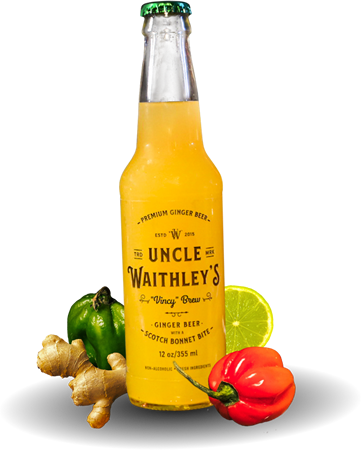get these nets
Veteran

Here’s How To Enjoy Grapefruit In The Land Of Its Origin— Barbados

Mar 20, 2023
.The grapefruit is the first citrus fruit to originate in the Americas— on the little island of Barbados in the southeastern Caribbean, known by many as the land of Rihanna.
It is said that grapefruit emerged as a chance seedling— an accidental cross between the Jamaican sweet orange and the Indonesian pomelo fruit which was introduced to the region in 1683 by Captain Philip Chaddock. This would result in pomelo being commonly referred to as shaddock, and the words grapefruit and shaddock being used interchangeably by many Caribbean people.
It is easy to see why grapefruit was named “Forbidden Fruit” by the early English colonists. Having first been spotted in the lush, underground forests of Welchman Hall Gulley in the center of Barbados, it is said that when they discovered the citrus fruit growing there, they wondered if they had ventured into Eden of the bible.

Welchman Hall Gulley, St. Thomas Barbados
Following its discovery, the novel fruit would grow rapidly in popularity.
There are several academic and cultural accounts of “forbidden fruit” that were recorded in Barbados during the 18th century. The earliest published record is said to have been in the book, “The Natural History of Barbados,” written in 1750 by Reverend Griffith Hughes, a natural historian and rector of the parish of St. Lucy, while another account was recorded by George Washington in the journal that he kept during his visit to Barbados, between 1750 and 1751, in which he described the experience of tasting the fruit at a local dinner party.
The first published record of the word “grapefruit” would appear in the 1837 book, Flora of Jamaica. It is thought that the fruit received this name because it grows in clusters that resemble grapes.

Grapefruits growing in clusters
More than three centuries following the birth of the first forbidden fruit in the parish of St. Thomas, grapefruits continue to feature in Barbadian beverages and cocktails and in culinary creations and naturopathic applications.
Bajans are well aware of the positive metabolic effects and immune boosting benefits of the fruit and frequently drink the fresh juice when they are fighting the cold or flu, making sure to retain as much of the rind as possible, given the high concentration of bioflavonoids and other anti-cancer agents located there.
Tangy, juicy and fragrant— grapefruits are recognized and valued for their culinary applications. In cooking, the citrus fruit pairs well with fish or pork and is frequently used in dressings or marinades. The juice is sometimes used in ice creams and sorbets, while the peel can be candied and used in desserts. The fruit is often juiced for a refreshing fresh juice, or it is used in cocktails.
Trudiann Branker, the first female master blender of Barbados’ Mount Gay Rum— the world’s oldest brand of rum— uses Barbados grapefruit as a key ingredient in cocktails such as the “Forbidden Cooler” and “Speightstown Punch” both of which were featured in British Vogue.
The latter cocktail, which is named after a town in the parish of St. Peter, is made of Mount Gay Black Barrel rum, fresh grapefruit juice, ginger syrup and mint tea, and is garnished with a ginger slice, mint leaves, and a grapefruit slice.
Clayton’s Kola Tonic is a bitter sweet tonic made locally with orange, kola nuts and hops, is widely enjoyed on-island. A variety of cocktails are made using Clayton’s and grapefruit, including Clayton’s Pink Lady Grapefruit Cocktail, which consists of fresh pink grapefruit juice, fresh lemon juice, Claytons Kola Tonic, orange liqueur, gin and a grapefruit wedge to garnish, and Clayton’s Grapefruit Sunrise, which is made of Claytons Kola Tonic, grapefruit juice, grenadine and cinnamon.
Claytons Kola Bitters is also combined with honey in a salad dressing for a zesty and refreshing citrus salad featuring grapefruit.
At restaurants across the island, grapefruits are often used in salads, raw fish dishes or in marinades and dressings. Tapas’ Restaurant’s Tuna Tartare, contains raw tuna with orange zest, grapefruit citronette and tomato salsa, while Cafe Luna’s mixed local organic greens are dressed with a grapefruit vinaigrette.
Chef Dario Callender, CEO of Well Catered, a Barbados-based luxury private chef, catering and culinary consulting company, says that, “Apart from the numerous health benefits, grapefruit is one of the most versatile and bold citrus flavors.”
One of Callendar’s favorite recipes with the fruit is his Grapefruit & Orange ceviche with Avocado and Plantain Chips.

Chef Dario Callendar's Grapefruit and Orange [+]Well Catered
Barbados-based plant based Chef and wellness gastronomy consultant, Manuela Scalini enjoys using grapefruit in both savory dishes, such as her Grapefruit Avocado Tartare, or in simple deserts such as grapefruit ice cream.











